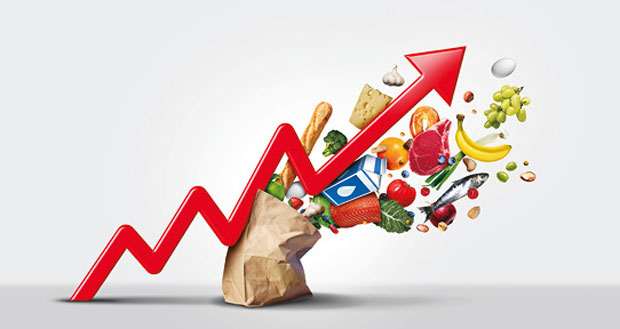 KITCHEN DESIGNER AND INSTALLER’S VIEW
KITCHEN DESIGNER AND INSTALLER’S VIEW
JULIAN SHINE,
MD OF SHINE CATERING SYSTEMS
Energy efficiency has always been on the agenda of commercial kitchens but a ‘perfect storm’ of factors ensures the need to minimise energy use is greater than it has ever been. Rising costs, increased legislation and more stringent targets on energy use are all having an impact as we transition to lower carbon energy sources in line with the Government’s target of net zero emissions by 2050.
With food prices rising and lower footfalls due to post-pandemic flexibility, energy costs are also becoming more important to drive savings without impacting quality.
Commercial kitchens are inherently large energy users; what proportion of a building’s energy is used in the kitchen will depend on the building use of course, but it is not uncommon for kitchens to use upwards of 50 per cent of the building’s energy consumption. Mitigating this energy use can be the key to maintaining a profitable catering operation whilst also meeting sustainability goals.
Savings can undoubtedly be made. Research by the International Journal of Low-Carbon Technologies shows between 45 per cent to 70 per cent of the wasted electric energy in commercial kitchens is due to behavioural factors and poor maintenance.
With this in mind, there are some important decisions to be made – namely whether to install electric or gas cooking appliances. Some chefs still prefer to cook on a flame, but when it comes to efficiency benefits, electric induction cooking will always outperform gas due to the level of control available.
Take induction cooking, for example, where 90 per cent of the heat generated is used for cooking, compared with around 70 per cent for electric cooktops and between 40 – 55 per cent for an open gas burner. Even taking into account the difference in cost per unit (which is becoming smaller), electric cooking is more economical.
A typical gas appliance also requires 1.5 times the volume flow of extraction than the electric equivalent because so much heat is wasted, which means a bigger extraction system and higher ongoing running costs.
Another way to keep costs down whilst achieving sustainability is to take advantage of specific energy saving features. This could include technologies such as demand-controlled ventilation and heating of prime cooking appliances, which reduces energy consumption when systems are not in use.
Demand-controlled ventilation is not mentioned in BREEAM but I would expect it to be added in due course because it is referenced in the latest version of the DW172: Specification for Kitchen Ventilation System guidance document from BESA and remains one of the best efficiency measures that can be used.
Other technologies include heat recovery and air source heat pumps on dishwashers, which can reuse waste heat from wastewater and hot humid air to heat incoming cold water. Even correctly sizing equipment such as commercial fridges will have a positive impact on the energy consumption of the kitchen.
The key, in all of this, is for architects, designers and their clients to work in collaboration with their kitchen consultant from the early stages of the project to help design and build more efficient kitchens from the outset. By working together, we can develop more sustainable, more cost-effective kitchens that meet all objectives.
 FOODSERVICE MANUFACTURER’S VIEW
FOODSERVICE MANUFACTURER’S VIEW
JASON WEBB,
MANAGING DIRECTOR, ELECTRONIC TEMPERATURE INSTRUMENTS
Consumers are paying more attention to food safety standards, and instant access to data across the farm to fork process has never been more important. Technology is a key enabler of both.
The market for farm to fork technology is growing, especially in an age where every minute and every pound count. Companies that can invest in the speed of their operation will reap rewards in a climate which is seeing growing costs to employ people. Technology allows organisations to react faster to situations because of instant access to accurate data.
Temperature control is critical to ensuring a high quality and safe product is delivered to the consumer’s plate. This is enabled by the constant harvesting and monitoring of data through wireless data loggers. These are IoT-enabled devices which can provide catering facilities with the information they need to act immediately should any unforeseen issues arise when it comes to food temperatures.
They transmit data via the cloud which is stored locally on PCs and other devices. The data is passed through a Wi-Fi router to a computer, regardless of where the user is based. It stays locally on a hard drive so the user can access real, live temperature monitoring data wherever they are. This ensures checks are completed correctly, issues are identified, and corrective actions are taken to reduce spoilage.
Wireless data loggers are ideally suited to applications where there are challenges in collecting real-time and recorded data, making them ideal tools for the likes of large retailers and catering enterprises which rely on industrial refrigeration units.
One of the most effective and cost-friendly set of actions firms can actually take centres around better management of refrigeration units during periods where demand is high or low.
Let’s look at the former when demand for refrigeration spikes. Overfilled fridges are a problem because they consume more energy. To respond effectively, measuring temperatures regularly (at least every few hours) is critical. Here, caterers should utilise technological devices to measure and record temperature readings to ensure their machines are operating properly – good solutions will also issue early alerts to enable preventative action to be taken. Meanwhile, keeping a detailed inventory of what goods need what amount of refrigeration should reduce instances where critical limits are reached. Overfilling refrigerators and cool rooms with produce also reduces the air flow and leads to hotspots, where bacteria can flourish even if you think you have the right temperature set on the dial. To combat this, an inventory of how much stock needs to be refrigerated should be kept.
Fridges which are underfilled are also suboptimal in terms of energy consumption. This can occur during periods of low demand – think school and university holidays, the off-season for events and holiday caterers, and even periods just before deliveries are due. Another example is buildings where occupation is lower than usual due to the rise of hybrid working, which means fewer staff in offices at any one time.
In these cases, caterers should re-evaluate their stock and delivery patterns. This will help to avoid unnecessarily full fridges, cut down on waste and prevent food from spoiling, while in some instances, entire refrigeration units may be able to be switched off.





